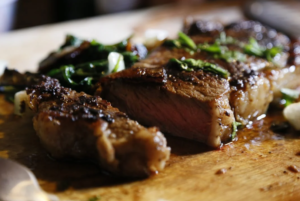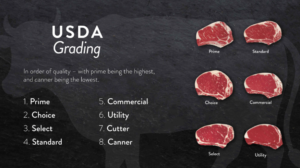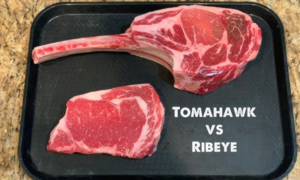The cowboy steak is celebrated for its robust flavor, impressive size, and luxurious reputation. This bone-in ribeye cut has become a staple in gourmet dining, but its high price tag leaves many wondering what makes it so costly. Let’s explore the key factors driving the price of cowboy steak and how it earns its place as a premium choice.
What Makes a Cowboy Steak Unique?
The cowboy steak is no ordinary cut of beef. It stands out due to:
- Bone-in Ribeye Presentation: The bone enhances flavor during cooking and creates a visually impressive steak.
- Exceptional Marbling: Fine fat distribution ensures tenderness and rich taste.
- Larger Size: Typically thicker and more substantial than other ribeye cuts, making it perfect for indulgent meals.
For those interested in cooking this steak to perfection, check out how to cook cowboy steak for techniques that bring out its best qualities.

Why is Cowboy Steak So Expensive?
Several factors contribute to the high price of cowboy steak:
1. Premium Meat Quality
Cowboy steaks are often derived from USDA Prime or Choice-grade beef, which is known for superior marbling. This grading ensures exceptional flavor and texture, but it also increases costs. The additional aging process, such as dry or wet aging, enhances the meat’s complexity while adding to the price. Linked to Beef It’s What’s For Dinner to explain grading standards for premium beef.
Learn more about alternative options like the poor man’s ribeye for a similar taste experience at a lower cost.

2. Production and Farming Costs
Raising cattle for cowboy steak requires:
- Specialized Feed: High-quality diets that improve the marbling and flavor.
- Ethical Farming Practices: Sustainable methods, such as hormone-free and grass-fed approaches, contribute to both quality and cost.
3. Rarity and Demand
The cowboy steak is a specialty cut, making it less available than other options. This limited supply, combined with its popularity in gourmet cuisine, drives up the price.
For a deeper understanding of this cut’s characteristics, read the article on what makes a cowboy steak special.

4. Transportation and Storage
Maintaining the quality of a bone-in steak requires specific storage conditions. From aging facilities to temperature-controlled transport, every step involves additional expenses to preserve freshness and flavor.
FAQs: Common Questions About Cowboy Steak
Why is cowboy steak so expensive?
Its premium quality, limited availability, and the care involved in production and transport all contribute to its higher price.
How can I cook cowboy steak like a pro?
Use grilling or reverse-searing methods to maximize flavor. Visit the best way to cook cowboy steak for step-by-step guidance.
Are there affordable alternatives to cowboy steak?
Yes, cuts like the poor man’s ribeye offer similar flavors at a fraction of the price.
Tips for Buying Cowboy Steak
To enjoy cowboy steak without overspending, consider:
- Buying Locally: Local butchers often provide fresher, higher-quality cuts.
- Looking for Deals: Some stores offer discounts on premium cuts during sales.
- Understanding Labels: Familiarize yourself with USDA grading to ensure you’re paying for quality. Linked to Sustainable Table for insights into ethical farming.
Conclusion
The cowboy steak justifies its price through a combination of superior quality, rich marbling, and cultural significance. While it’s undeniably an investment, the unparalleled flavor and experience it provides make it worth every penny. Whether you’re grilling at home or dining out, this steak continues to be a cut above the rest. Linked to Serious Eats for cooking tips.
